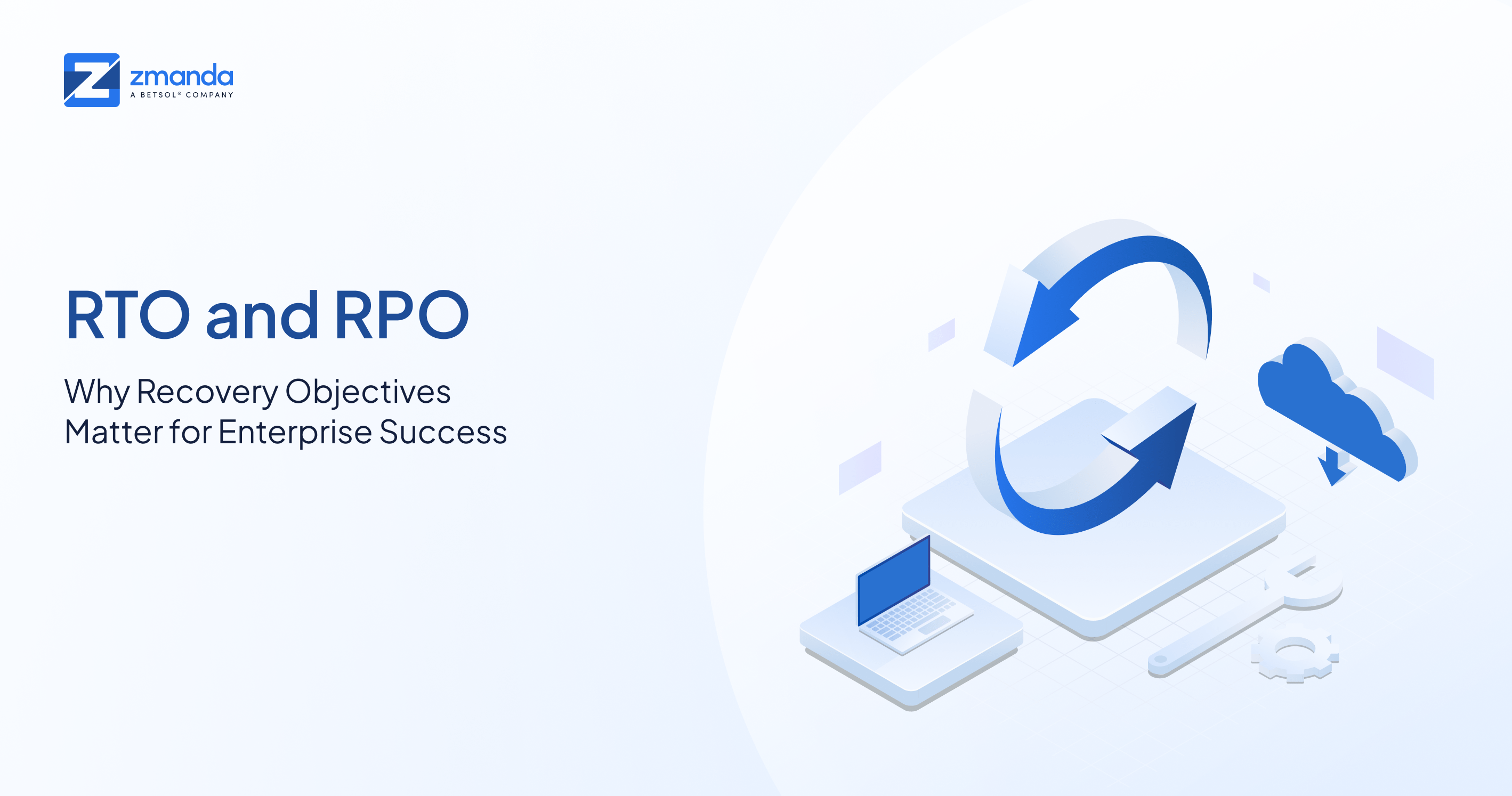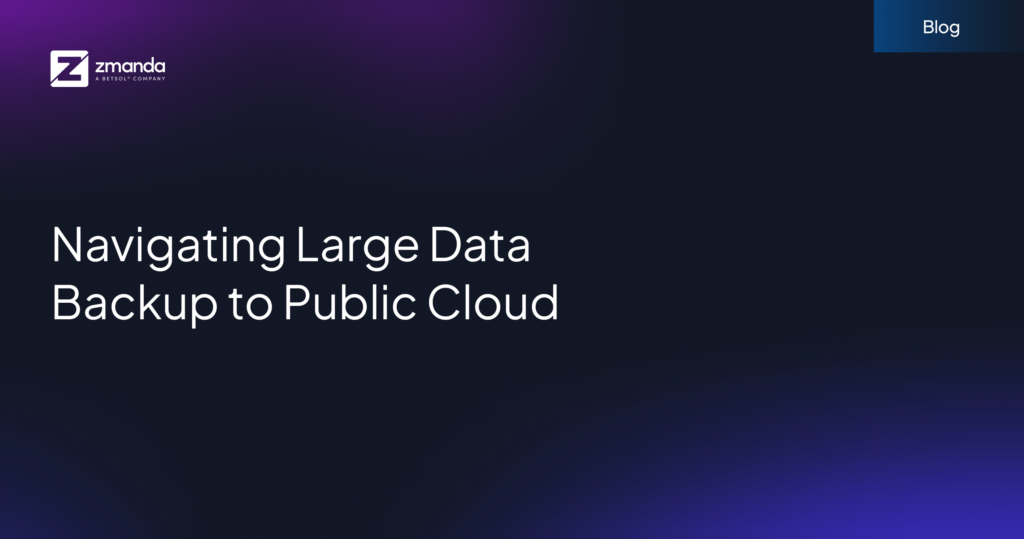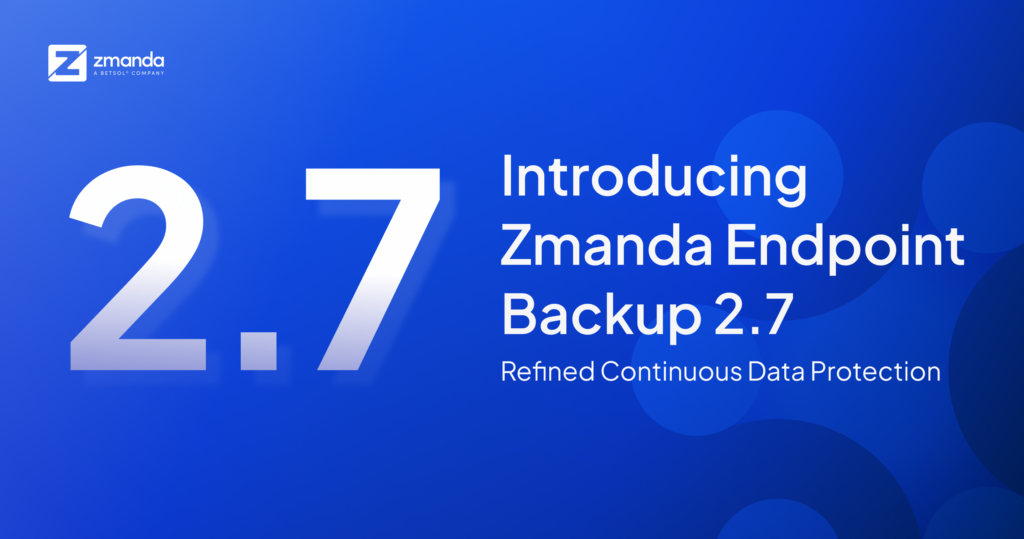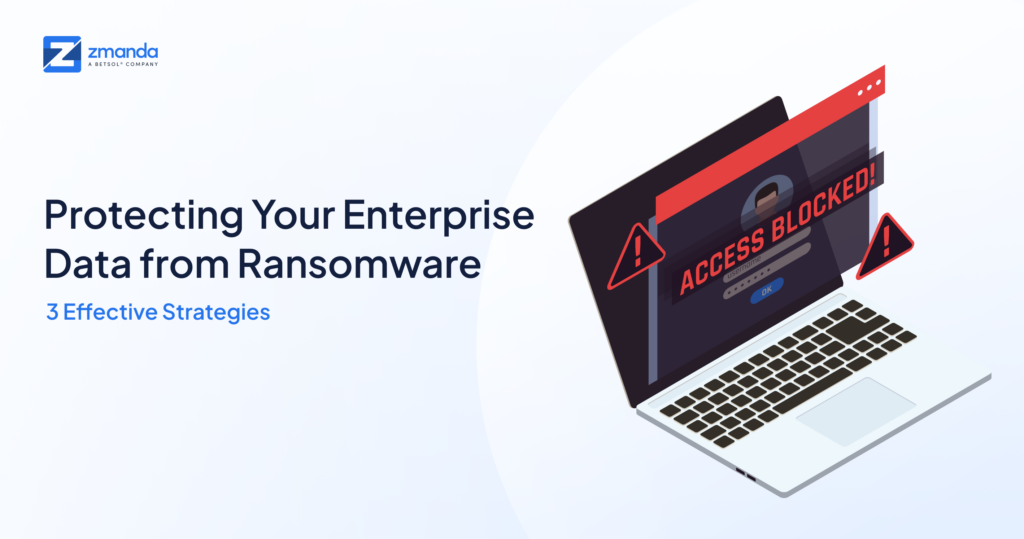
In today’s world, data is an essential asset for any business. Often, with little or no warning, disasters occur unexpectedly. This urges you to conduct risk calculations and establish recovery priorities, an essential element of both the business continuity and disaster recovery (DR) planning processes.
In the event of a major disruption, your system needs to be recovered, and you cannot ignore it. That’s where the recovery objectives: Recovery Time Objective (RTO) and Recovery Point Objective (RPO) come in. Understanding RTO and RPO is essential for enterprises’ success, as it helps organizations set recovery goals and implement the right disaster recovery plan.
What is RTO?
Recovery Time Objective (RTO) is the maximum amount of time that an organization can tolerate for a system or application to be down before it impacts business operations. In other words, it refers to the target time that the organization has set for restoring a system or application following an unforeseen outage. RTO is a critical metric as it determines the speed of recovery after an incident. The longer the RTO, the longer it will take for the organization to recover and resume normal operations.
What is RPO?
The Recovery Point Objective (RPO) is the maximum amount of data loss that an organization can tolerate in the event of an unexpected outage. RPO is critical for organizations that deal with sensitive and confidential data such as financial data, healthcare records, and customer information. RPO also determines the frequency of data backups.
Why Recovery Objectives Matter for Business Success
Recovery objectives are essential for business success as they help organizations set the right recovery goals and implement the right disaster recovery plan. The right recovery objectives ensure that the organization is able to recover lost data quickly and resume normal operations. Here are some reasons why recovery objectives matter for business success:
Minimizes Downtime: Setting the right RTO ensures that the organization can recover from an outage quickly and minimize downtime. The longer the downtime, the more impact it will have on the organization’s operations and revenue.
Reduces Data Loss: Setting the right RPO ensures that the organization can recover the maximum amount of data possible in case of an unexpected outage. This helps minimize data loss and prevent any data breaches.
Reduces Costs: The right recovery objectives help organizations implement the right disaster recovery plan. This ensures that the organization can recover from an outage quickly and efficiently, reducing the costs associated with downtime and data loss.
Ensures Compliance: Organizations that deal with sensitive and confidential data must comply with various regulations such as HIPAA, GDPR, and PCI-DSS. The right recovery objectives help organizations comply with these regulations and prevent any data breaches.
Implementing the Right Disaster Recovery Plan
To implement the right disaster recovery plan, organizations must first define their RTO and RPO. This helps to determine the speed of recovery and the amount of data that can be lost in the event of an unexpected outage. Once the recovery objectives have been defined, organizations must implement the right disaster recovery plan. Here are some steps to implement the right disaster recovery plan:
Determine Recovery Objectives: Define RTO and RPO to determine the speed of recovery and the amount of data that can be lost in the event of an unexpected outage.
Choose the Right Disaster Recovery Solution: Choose a disaster recovery solution that aligns with the organization’s recovery objectives. The solution should provide flexibility, scalability, and security.
Implement Regular Backups: Implement regular backups to ensure that data is backed up at regular intervals. This helps minimize data loss in the event of an unexpected outage.
Test the Disaster Recovery Plan: Test the disaster recovery plan regularly to ensure that it’s effective and efficient. Regular testing helps identify any gaps in the plan and ensures that the organization can recover quickly and efficiently.
Achieve RTO & RPO- The Zmanda Way
The most critical variables in the event of a disaster are your Recovery Point Objective (RPO) and Recovery Time Objective (RTO). A solid DR plan includes the steps to fulfill two main objectives—the RPO and the RTO—while keeping recovery time low.
With seamless hybrid cloud setups, Zmanda’s disaster recovery solution strives to answer this problem. Zmanda offers the perfect stack to shape RPO that ideally fits your business needs. Through high-availability native code architectures, the Zmanda backup engine accelerates recovery time by eliminating the delay for an outage notification.
See it for yourself! Let’s get started with a free trial to strategize your data backup. You can also request a demo. If you have any questions, please reach out to us here.


